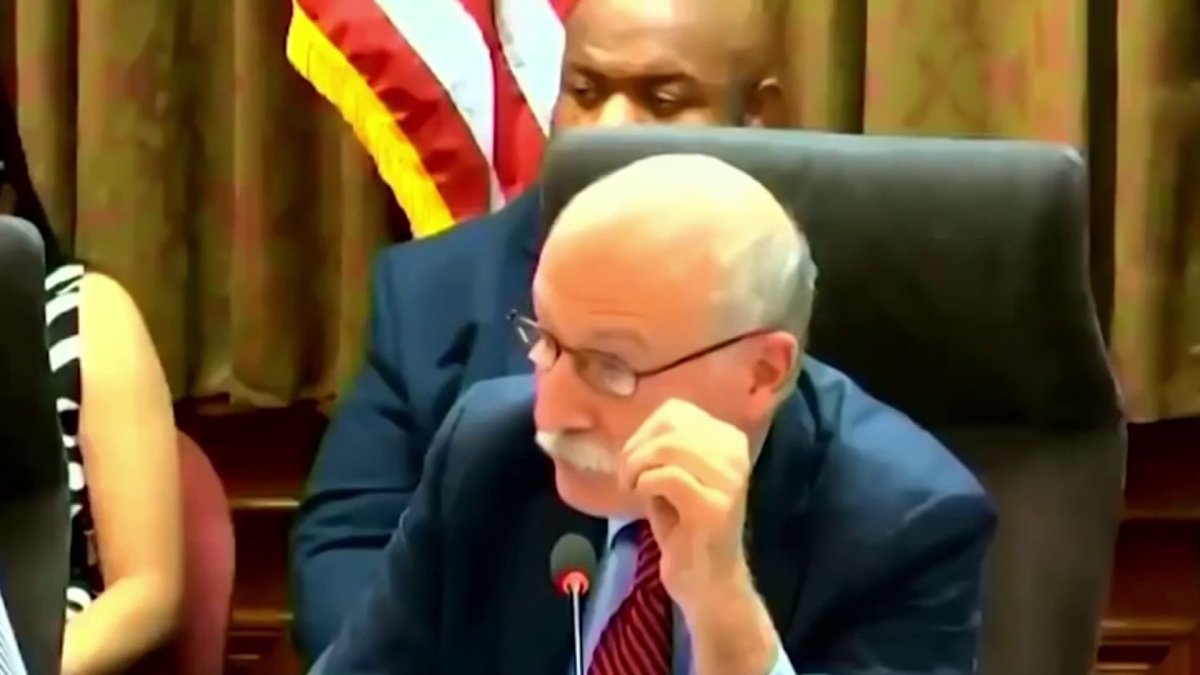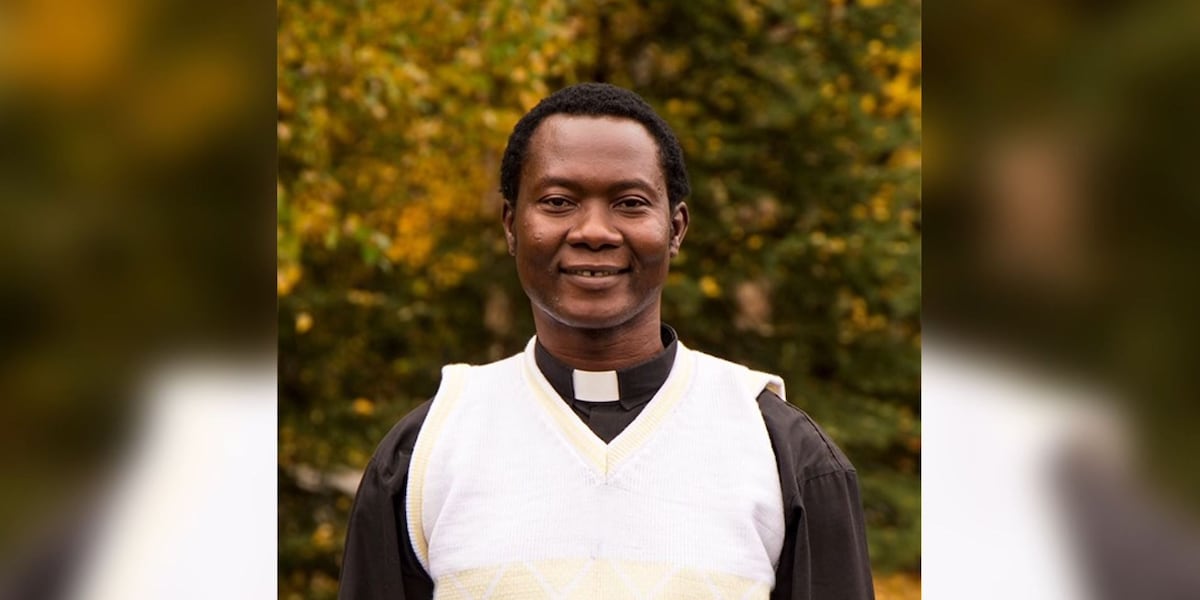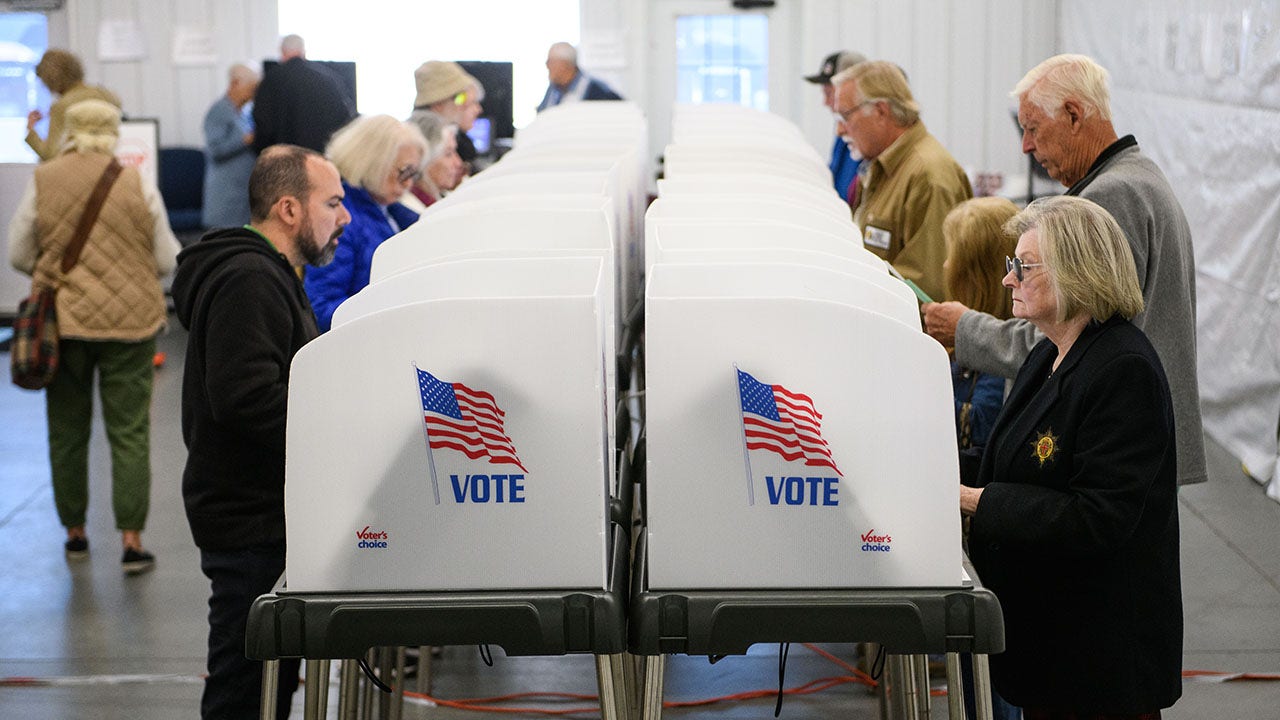New York
Dancer Stabbed to Death Was a Shy Boy Turned Proud, Exuberant Man

Karen Pendergrass kept seeing the lanky boy walk by the lunchroom where she taught dance twice a week to eighth grade students in North Philadelphia. He would peer inside, then run away as soon as Ms. Pendergrass made eye contact.
“You come peeking in my door one more time and you’re coming in my class,” Ms. Pendergrass told him. “From there, he never left.”
For the next 15 years, O’Shae Sibley danced, working on the side as a delivery man, waiter and cleaner between auditions and performances in Philadelphia and New York, where he moved to further his career. At 28, he was preparing to audition for “The Lion King,” one of his favorite Broadway musicals.
But on Saturday, Mr. Sibley and his friends made a quick stop at a Brooklyn gas station as they came back from a beach day. They were blasting Beyoncé and dancing around the car when a group of about three young men told them to stop and hurled gay slurs at them.
Summy Ullah, a 32-year-old gas station attendant who witnessed the encounter, said one of the young men said, “I’m Muslim. I don’t want this here.”
Mr. Sibley and his friends argued with them, and one young man began recording Mr. Sibley and his friends on his phone while cursing at them. Mr. Sibley followed the group and Mr. Ullah, who rushed over to prevent a fight, saw the young man who was recording pull out a knife.
Mr. Ullah said he did not realize Mr. Sibley had been stabbed until he saw the blood.
“I can’t forget what I’ve seen,” said Mr. Ullah. “It’s not the gay guys’ fault, because they were minding their own business. They didn’t do anything.”
The killing has shocked New Yorkers and galvanized the gay community with grief. Some are planning vigils and others have called on the public to gather at the Mobil gas station on Coney Island Avenue and “vogue as an act of resistance,” a reference to the stylized dancing that Mr. Sibley and his friends performed, one that mimics models’ poses and blurs the lines of gender.
On Thursday evening, at the Stonewall Inn, the Greenwich Village bar known as the cradle of the gay rights movement, about 80 mourners gathered. In a gospel cadence, they sang “O’Shae Sibley was freed today” as an ensemble of wind instruments played.
“He was just a beautiful spirit, a wonderful person, just exercising his freedom to be alive,” said Sunder Ganglani, 42, who rode his bike to the demonstration with a picture of Mr. Sibley attached to his rear wheel.
On Beyoncé’s website, “Rest in Power, O’Shae Sibley” was prominently displayed against a black backdrop. Mayor Eric Adams called the attack an act of homophobia that violated the city’s ethos of “knowing and loving people of all backgrounds.”
“We’ll bring justice for O’Shae’s family and loved ones,” he said in a social media post.
The police said they are searching for a man in his late teens in connection with the killing. The department’s hate crimes unit is assisting in the investigation.
Brian Downey, a New York Police Department detective and president of the Gay Officers Action League, said the attack underscores the violence gay people face even in a city that is supposed to be a “refuge, a place of safety.”
For Mr. Sibley, New York felt like a better haven than North Philadelphia, where he had to navigate the streets carefully, his friends said.
“For many Black gay men, there is code switching, where we have to walk more masculine presenting,” said Kemar Jewel, 31, a dancer and choreographer who met Mr. Sibley when they were teenagers in Philadelphia. “Maybe we’re wearing looser clothing or not looking people in the eye.”
Joan Myers Brown, founder of the Philadelphia Dance School, gave Mr. Sibley a full scholarship after Ms. Pendergrass recommended him.
She was impressed with his determination. In a family of 11 siblings, there was rarely extra money. Ms. Brown recalled driving him home late at night from the studio in West Philadelphia when he didn’t have car fare. Ms. Pendergrass often gave him food and clothing, Ms. Brown said.
“He had a tough fortitude,” Ms. Brown said “To handle New York, you have to be tough and he was handling it.”
In New York, Mr. Sibley moved freely. He vogued at Pier 47 on the Hudson River, a favorite hangout, and had a tight-knit group of friends who collaborated on videos, dance competitions and performances.
In June 2020, as the city was swept by demonstrations against police brutality, Mr. Sibley joined four other dancers who, dressed in black berets and black clothing, vogued in locations around the city for a video directed by Mr. Jewel. The video was meant to support the Black Lives Matter movement but also showcase the joy and resistance embodied in vogueing.
Mr. Jewel directed Mr. Sibley as he strutted, pirouetted and glided on tiptoe in front of masked police officers who watched him with curiosity.
“He was so intentional in his movements,” Mr. Jewel said.
Soft-spoken, quiet and friendly, Mr. Sibley would deflect tense moments with a joke or silly comment, his friends said. But he was unafraid of confronting homophobia and bristled when anyone warned him that being open about his sexuality could draw hostility.
Beckenbaur Hamilton, 51, a neighbor and friend of Mr. Sibley, who lived alone in a studio apartment in Brownsville, remembered a boisterous party Mr. Sibley threw on July 2.
He and his friends were dancing, playing loud music and drinking. Mr. Hamilton, who is gay, said he worried the “wrong person” would overhear them and react violently.
When he warned Mr. Sibley and his friends, they laughed off his concerns, Mr. Hamilton said.
“I’m just telling you for your own safety: You don’t know who is who,” Mr. Hamilton said he told them. “They said, ‘We are just living our truths.’”
Iquail Shaheed, 39, a dancer and choreographer, met Mr. Sibley when the dancer was about 16 and they were both at the Philadelphia Dance School. By that point, Mr. Sibley had joined the school’s second company and Dr. Shaheed, an alumnus assigned to mentor him, was urging the younger dancer to draw from his experiences as a boy for a piece set to the song “Someday We’ll All Be Free,” by Donny Hathaway.
It conveyed the feelings of a “young Black male coming of age in a world that was devastatingly hard for him,” Dr. Shaheed said. To help Mr. Sibley connect with the work, Dr. Shaheed asked Mr. Sibley to think about what it felt like to hide his sexuality and to protect himself from those who would show hatred toward him.
“I was really pushing him,” Dr. Shaheed said. Mr. Sibley struggled with the direction.
“O’Shae got really mad at me,” he said. “It would really get to him.”
The Monday before he died, Mr. Sibley met with Dr. Shaheed and said he wanted to take classes with him at his studio in Manhattan. He wanted intensive preparation for his “Lion King” audition.
“I wasn’t fully ready for the way you were pushing me when I was younger,” Mr. Sibley said, according to his friend. “I’m ready for it now. I know you’re not going to be easy on me.”
Mr. Sibley told him he had saved enough money to pay for the classes. Dr. Shaheed, who that week left for a performance in Belgium, had no intention of letting him pay. He planned to surprise Mr. Sibley with the news when he got back to New York.
Mr. Ullah said that just before the fight began on Saturday, he had been watching Mr. Sibley and his friends and was enjoying their exuberant display. Mr. Ullah said he tried to chase the young man who stabbed Mr. Sibley, but he jumped into a Toyota Highlander that sped off.
“This was the first time I saw a hate crime in this neighborhood where I work,” Mr. Ullah said.
“I’m Muslim myself,” said Mr. Ullah, who immigrated from Pakistan. “When I saw them dancing, I was laughing too but I wasn’t making fun of them. Everyone has their own perspective, gay, transgender. We have gay people in our countries as well. You don’t make fun of them. They don’t say anything to you. They aren’t making fun of you.”
Dr. Shaheed said after news of the stabbing broke, someone sent him a brief 2016 clip of Mr. Sibley dancing to the Donny Hathaway song.
He has tried to imagine how happy and liberated Mr. Sibley must have felt during the last minutes of his life, jumping and vogueing with his friends.
“He was free,” Dr. Shaheed said. “Dancing without a care in the world.”
Kitty Bennettcontributed research.

New York
N.Y.C.’s Mayoral Candidates Spent Millions on TV Ads. What Are They Saying?

Estimated spending on
broadcast ads that have aired
$1.1 million
$4.3 million
The Democrats running for mayor in New York City and a super PAC supporting Andrew M. Cuomo are spending millions to reach potential voters, with much of the spending going toward commercials on broadcast television. A New York Times analysis of the broadcast ads that have aired so far, using data from AdImpact, explored the major themes highlighted by the candidates: crime and safety, President Trump, affordable housing and corruption.
Among the ads aired,
seven mention crime and safety
3 ads
Mr. Cuomo, the former governor, has been framing himself as a law-and-order candidate who will crack down on crime and improve public safety. Ads run by Fix the City, the super PAC backing Mr. Cuomo, have depicted New York as a city in chaos. One of its ads opens with images of police sirens, caution tape and subway riders fleeing a smoke-filled train.
“Crime is rampant,” says a voiceover in another pro-Cuomo ad, also paid for by Fix the City. That ad also references Mr. Cuomo’s “five-borough crime and affordability plan,” which would add “5,000 more cops” to the streets.
Other candidates took a subtler approach. Scott Stringer, a former city comptroller, said in his only broadcast ad to air so far that he would “put a cop on every train” and “hire more mental health workers.” An ad for Brad Lander, the current city comptroller, tied the idea of safety to Mr. Lander’s plan to “end street homelessness for the mentally ill.” An ad for Zohran Mamdani, the state assemblyman, simply said he would make New York a “safer city.”
Among the ads aired,
five mention President Trump
2 ads
Taking jabs at Mr. Trump and his administration could almost be considered a requirement for candidates running in a Democratic primary in a city where former Vice President Kamala Harris won about 70 percent of votes in the 2024 presidential election. Still, some of the ads that mention the president are more direct than others.
An ad for Mr. Stringer was among the most explicit: “We deserve a mayor who can get our city back on track and keep this schmuck out of our business,” Mr. Stringer says over a clip of Mr. Trump dancing at a rally, adding that he will “tell Trump where to stick it.”
Mr. Lander drives a large forklift around a junkyard in his broadcast ad and places cars into a crushing machine. One of the cars has the words “Trump & Musk” in large black letters across the side.
Other candidates made only passing swipes at the president. Some of the ads supporting Mr. Cuomo mentioned that he took on Mr. Trump as governor and will again as mayor, and an ad for Mr. Mamdani said he would stand up to Mr. Trump. Mr. Myrie’s broadcast ad did not mention Mr. Trump.
All ads mention affordable housing
3 ads
Every broadcast ad reviewed in the analysis mentioned housing at least once. In one ad, Mr. Mamdani likened Mr. Cuomo to the current mayor, Eric Adams, whose housing policies have been similar to the former governor’s, and whose popularity declined after he was indicted on fraud and corruption charges in 2024. The Trump administration later dropped the charges.
“Cuomo is running for Adams’s second term,” Mr. Mamdani said in the ad, adding that he will “take on bad landlords and greedy corporations.”
Mr. Adams and Mr. Cuomo are both moderates who have many of the same donors, including powerful real estate leaders, and both have supported housing policies that are in stark contrast to Mr. Mamdani’s. The mayor and former governor both oppose freezing increases for rent-stabilized apartments, for example, while one of Mr. Mamdani’s ads is devoted solely to his plan to freeze rent prices.
In ads for other candidates, housing is mentioned only briefly. An ad by Fix the City for Mr. Cuomo said he will “cut red tape for affordable housing and build 500,000 new units.” In Mr. Stringer’s ad, he said he will “turn vacant lots into affordable apartments.” Mr. Myrie’s ad says he has “the boldest plan to build affordable housing.”
Among the ads aired,
three mention corruption
0 ads
Several of the candidates mentioned corruption in their ads. In Mr. Lander’s ad, a second car is brought out to be crushed, this one symbolizing “corruption,” specifically as it relates to Mr. Cuomo.
“Andrew Cuomo spent $60 million of your money to defend himself in court. That’s corrupt,” a voiceover says as the car is brought to the crushing machine. “But Brad Lander fights corruption.”
In the ad in which Mr. Mamdani compares Mr. Cuomo to Mr. Adams, the candidate paints the former governor and mayor as the corrupt establishment, responsible for making the city unaffordable.
“Working people are being pushed out of the city they built, and it’s because corrupt politicians like Eric Adams and Andrew Cuomo have sold us out to billionaires and corporations, rigging the economy against us,” Mr. Mamdani says over a series of images that combine Mr. Cuomo’s face and quotes about the former governor from news articles.
Mr. Stringer defines corruption less precisely, mentioning that he “fought corruption” as comptroller. The three pro-Cuomo broadcast ads by Fix the City did not mention corruption, nor did the ad for Mr. Myrie.
Total spending on advertising,
including future broadcast spots
| Total spent | Broadcast share | |
|---|---|---|
|
Fix the City (pro-Cuomo super PAC) |
$8.1 million | 91% |
 Mamdani |
$3.0 million | 41% |
 Lander |
$2.3 million | 72% |
 Stringer |
$1.9 million | 83% |
 Myrie |
$1.7 million | 27% |
Spending on ads that have already aired on broadcast television, which this analysis focused on, is one slice of candidates’ overall ad spending. They have also purchased broadcast spots to air more ads in the future, as well as ads on other platforms like streaming television, satellite and internet. Broadcast was, however, a major focus for the candidates.
Fix the City, the pro-Cuomo super PAC, has spent the most on advertising by far, with 91 percent of its spending devoted to commercials on broadcast networks. (Mr. Cuomo’s campaign has not yet aired any of its own ads on broadcast television, according to AdImpact.)
By contrast, the campaign for Mr. Mamdani, which has become known for its savvy approach to social media, has spent just 41 percent of its advertising budget on broadcast, according to the AdImpact data. (Mr. Mamdani’s campaign has, however, spent more on broadcast than any other individual platform.)
One of the leading Democrats in the mayor’s race, Adrienne Adams, the speaker of the New York City Council, has not yet aired an ad on broadcast television. The candidate struggled to raise funds early in her campaign, but recently got an infusion of $2 million from the city’s fund-matching program, which the campaign said it would use for an aggressive ad blitz in the coming weeks before the June 24 primary.
New York
Are You Smarter Than a Billionaire?

Over the course of one week, some of the richest people in the world descended on New York’s auction houses to purchase over $1 billion of art. It might have played out a little differently than you would have expected.
Can you guess which of these works sold for more?
Note: Listed sale prices include auction fees.
Image credits: “Untitled,” via Phillips; “Baby Boom,” via Christie’s Images LTD; “Hazy Sun,” With permission of the Renate, Hans & Maria Hofmann Trust/Artists Rights Society (ARS), New York; via Christie’s Images LTD; “Petit Matin,” via Christie’s Images LTD; “Concetto spaziale, La fine di Dio,” Artists Rights Society (ARS), New York/SIAE, Rome; via Sotheby’s; “Baroque Egg with Bow (Orange/Magenta),” via Sotheby’s; “The Last Supper,” The Andy Warhol Foundation for the Visual Arts, Inc./Licensed by Artists Rights Society (ARS), New York; via Christie’s Images LTD; “Campbell’s Soup I,” The Andy Warhol Foundation for the Visual Arts, Inc./Licensed by Artists Rights Society (ARS), New York; via Christie’s Images LTD; “Miss January,” via Christie’s Images LTD; “Fingermalerei – Akt,” via Sotheby’s; “Grande tête mince (Grande tête de Diego),” Succession Alberto Giacometti/Artists Rights Society (ARS), NY; via Sotheby’s; “Tête au long cou,” Succession Alberto Giacometti/ARS, NY/Photos: ADAGP Images/Paris 2025; via Christie’s Images LTD; “Revelacion,” Remedios Varo, Artists Rights Society (ARS), New York / VEGAP, Madrid; via Christie’s Images LTD; “Le jardin nocturne,” Foundation Paul Delvaux, Sint-Idesbald – ARS/SABAM Belgium; via Christie’s Images LTD.
Produced by Daniel Simmons-Ritchie.
New York
Video: How a Mexican Navy Ship Crashed Into the Brooklyn Bridge

On Saturday, a Mexican Navy ship on a good will tour left a New York City pier bound for Iceland. Four minutes later, it crashed into the Brooklyn Bridge. [Spanish] “It’s falling!” [English] “No way!” Here’s what happened. The Cuauhtémoc had been docked on the Lower East Side of Manhattan for four days, open to visitors looking for a cultural experience. As the ship prepared to leave on Saturday night, a tugboat arrived to escort it out of its pier at 8:20 p.m. The ship’s bow, the front of the vessel, faced Manhattan, meaning it would need to back out of its berth into the East River. As the Cuauhtémoc pulled away from shore, the tugboat appeared to push the side of the ship, helping to pivot the bow south toward its intended route. The river was flowing northeast toward the Brooklyn Bridge and the wind was blowing in roughly the same direction, potentially pushing the ship toward a collision. Photos and videos suggest the tugboat was not tied to the ship, limiting its ability to pull the ship away from the bridge. The Cuauhtémoc began to drift north, back first, up the river. Dr. Salvatore Mercogliano, who’s an adjunct professor at the U.S. Merchant Marine Academy, told The Times that the ship appeared to be giving off a wake. This suggests its propellers may have been running in reverse, pushing it faster toward the bridge. The tugboat sped alongside the ship as it headed north, possibly trying to get in front of it and help the ship maneuver the other way. But it was unable to cut the ship off or reverse its course. All three masts crashed into the underside of the Brooklyn Bridge at approximately 8:24 p.m., four minutes after the ship had left the pier, causing the top sails to collapse. Crew members standing on the masts during the collision were thrown off entirely. Others remained hanging from their harnesses. A New York City patrol boat arrived about eight minutes after the collision, followed quickly by a fire department boat. Additional law enforcement and emergency medical services removed the wounded for treatment. According to the Mexican Navy, two of the 227 people aboard the ship were killed and 22 others were injured.
-

 Movie Reviews1 week ago
Movie Reviews1 week agoMOVIE REVIEW – Mission: Impossible 8 has Tom Cruise facing his final reckoning
-

 News1 week ago
News1 week agoHarvard has $52,000,000: Trump mounts attack, backs foreign student enrolment ban
-

 Politics1 week ago
Politics1 week agoTrump honors fallen American heroes, praises God in Memorial Day address: 'Great, great warriors'
-

 News1 week ago
News1 week agoVideo: The Counties Where Trump Made Gains
-

 Politics1 week ago
Politics1 week agoTrump admin asking federal agencies to cancel remaining Harvard contracts
-
World1 week ago
Russia hits Kyiv with massive drone and missile attack amid prisoner exchange
-

 Politics1 week ago
Politics1 week agoHomeland Security chief Noem visits Netanyahu ahead of Jerusalem Day
-

 Culture1 week ago
Culture1 week agoCan You Match These Canadian Novels to Their Locations?














